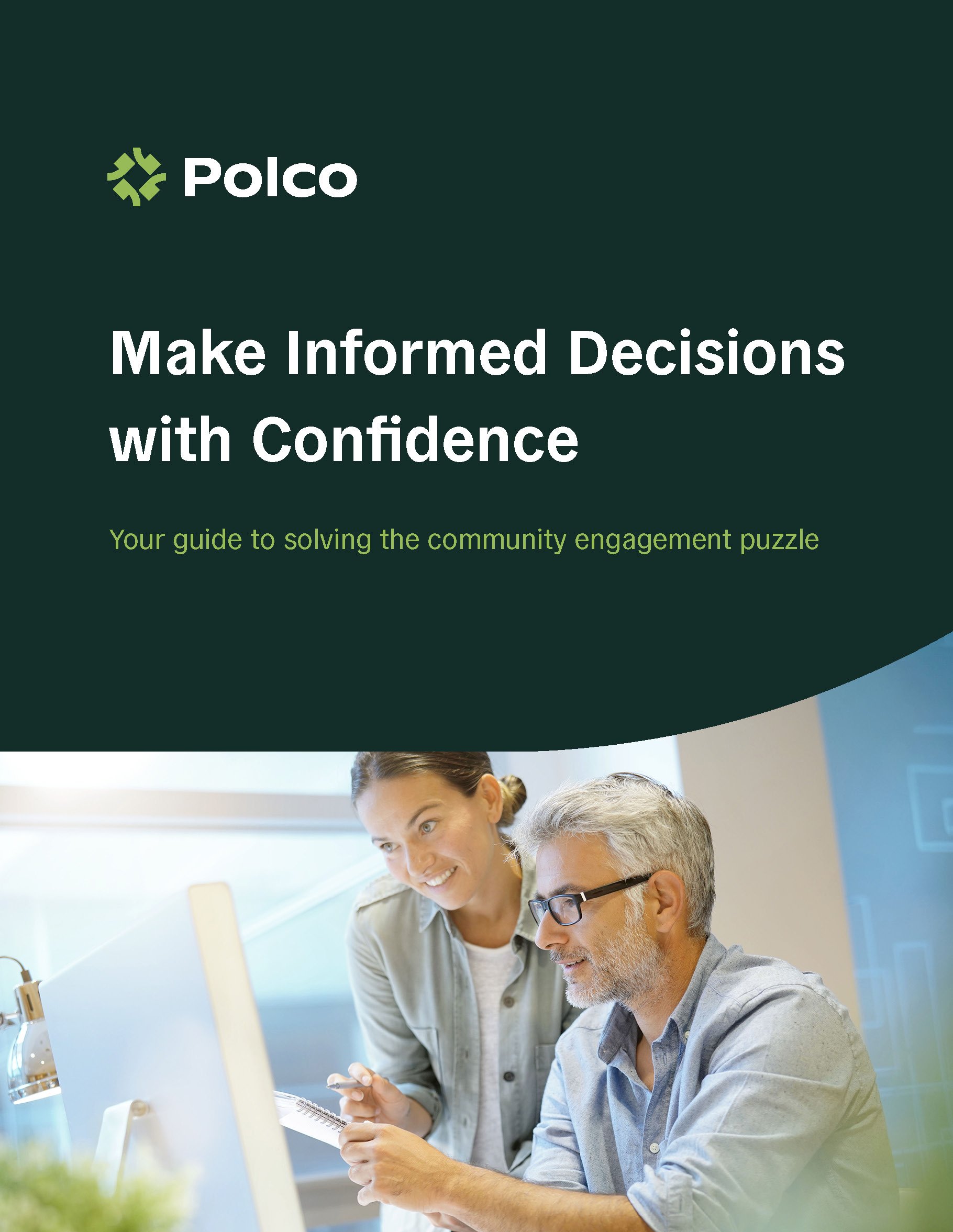Share this
Top Eight Local Government Priorities and How COVID-19 is Affecting Them
by NRC on March 24, 2020

-Keynote Webinar Show Notes-
The COVID-19 pandemic has affected nearly every facet of American life, and local government is no exception.
The outbreak strikes at the heart of two community facets, safety and the local economy, which residents responding to The National Community Survey (The NCS) rate as essential or very important local government priorities.
In this National Research Center (NRC) / Polco Keynote Webinar, Sr. VP of Innovation Michelle Kobayashi and Marketing Director Angelica Wedell reveal how Coronavirus is augmenting the long-standing priorities for local governments and what communities around the nation can do to respond.
You’ll learn about the eight priorities residents expect their governments to focus on, even during times of crisis, and how resources from Polco / NRC can help keep communities safe.
“The problem we’re facing with COVID-19 is that it is not only affecting our two most important priorities, but all the elements of community livability,” Kobayashi said.

What Residents Want Their City Leaders to Focus On
Data collected from The NCS over more than 15 years tells the story of what residents expect from their governments. Eight top priorities stand out when looking at responses from hundreds of thousands residents across hundreds of jurisdictions from around the nation, Wedell said.
From least important to most important, are:
8. Recreational Health and Wellness
A city’s focus on supporting healthy lifestyles through sponsored events, preventive measures, and infrastructure such as recreation centers and parks, was considered essential or very important by about 73 percent of residents.
7. Built Environment
The design and construction of human spaces, the way land is used, the city’s efforts at planning and zoning, and other features that make a city liveable, were essential or very important for 77 percent.
6. Sense of Community
Coming in with 78 percent giving high importance is neighborliness, and how welcoming a community is toward its residents, and what opportunities exist for the community to engage with itself.
5. Education and Enrichment
Also at a 78-percent importance rating is how a community educates and enriches the lives of its young and adult residents through schools, libraries, cultural and arts events, and life-benefiting programs.
4. Mobility
About 80 percent of residents say that how easy it is to get around a city, from its accessibility, to traffic flow, to its paths and general walkability are essential or very important.
3. Natural Environment
When it comes to a town’s natural resources and native features, open spaces, parks and other facets of the environment, residents rated this feature essential or very important 82 percent of the time.
2. Local Economy
From small businesses to job opportunities available within the city, residents considered a town’s local economy to be the second most important feature, rating it essential or very important 89 percent of the time.
1. Safety
At the top of what residents want in a place to live is a sense of safety. Residents rated how a city protects them from danger or risk, the police, fire and animal control services, measures of emergency preparedness and the strength of public health as essential or very important 90 percent of the time.
What Makes A Community ‘Recommendable?’
What residents say they want their local government to focus on isn’t always what makes a community “recommendable,” however. For all age groups, better ratings for the appearance of a community and its K-12 education correlated highly with recommending the community as a place to live.
Younger people ages 18-34 are more likely to recommend a community when they like its recreation amenities and cost of living, while older adults ages 55 and above are more likely to value affordable healthcare.
However, younger adults and seniors share views on the importance they place on public places, while older adults and middle aged residents share the value of neighborliness.
How COVID-19 Affects Local Government Priorities
For most governments, handling crises is not new. But handling a pandemic such as Coronavirus can completely turn a municipality on its head, Kobayashi said.
COVID-19 affects every aspect of local government priorities. For that reason it is crucial that municipalities address the following six facets:
Leadership: Residents are nervous and are looking to their local elected officials for direction, protection, planning and transparency.
Planning: City leaders must plan for responses to public health concerns and priorities, as well as plan for police and emergency services to have continuity.
Collaboration: Now is the time for government agencies and residents to collaborate on solutions, particularly with local, state and federal governments, public health departments, businesses, and faith-based communities.
Communication: With so much misinformation in the public sphere, it’s important for local governments to ensure residents have the right information to subdue panic and keep communities from devolving into chaos.
Policymaking: When communication isn’t enough to keep residents safe, local governments must turn to policymaking to mitigate the virus. But municipalities need to be flexible. Policies could change weekly or daily depending on state and federal government actions or recommendations.
Evaluation: It is crucial that residents and policy-makers engage in a dialogue about the evolving nature of the situation. Discovering the concerns of residents and information gaps can empower residents and inform government actions.
How Polco Can Help
Polco is the perfect resource to help local governments engage, evaluate and create a dialogue with residents about many facets of the Coronavirus.
“Finding ways to connect with people when they are socially isolated and when they can’t come to a big meeting is still critically important,” Kobayashi said.
Using Polco, Kobayashi said, can convey local government leadership to residents. Polco surveys provide opportunities for two-way communication, tap into the wisdom of the crowd, foster measurement and tracking of trends and concerns, inform policy decisions and empower community stakeholders.
“Polco allows you to measure people in terms of their knowledge, their attitudes and their behaviors. Are people really doing what we hope they are? Also, it measures what people are really struggling with so we know how to change and adapt and make the right kinds of decisions for the community,” Kobayashi said.
Also, deploying Polco surveys can help residents feel empowered by sharing their voice when they might not feel in control of anything.
“One of the things we think about are all these people sitting at home feeling helpless,” Kobayashi said. “By using Polco to ask them how we should work together as a community, it gives people a sense of empowerment. It gives them a sense of things they can do to make them feel like they have some control over the situation.”
Custom-tailored COVID-19 Polco Surveys Available
To help local governments keep their communities safe, Polco has developed a free suite of surveys local governments can quickly and easily publish on its online engagement platform. The surveys are pre-loaded in Polco as drafts ready for your review, publication, and promotion.
- The Household Status Survey reveals where residents get information, how they perceive potential risks, and the impact on employment.
- The Resident Knowledge and Attitudes Survey measures and tracks resident knowledge of COVID-19, attitudes and emotional health.
- The Community Action Survey assesses support for actions community leaders could take, and what behaviors and actions residents are taking to help stop the spread of COVID-19.
- The Business Survey measures impacts on employers and employees, changes in structure and policies, the types of assistance needed and other challenges businesses face.
Related Articles
Share this
Subscribe to Our Newsletter

Featured Report
Download your copy of "Make Informed Decisions with Confidence: Solving The Community Engagement Puzzle" today!
You May Also Like
These Related Stories

How Local Government Mentorship Advances Careers and Bridges Leadership Gaps

Press Release: Polco Selected for an Exclusive Business Development Immersion Program

